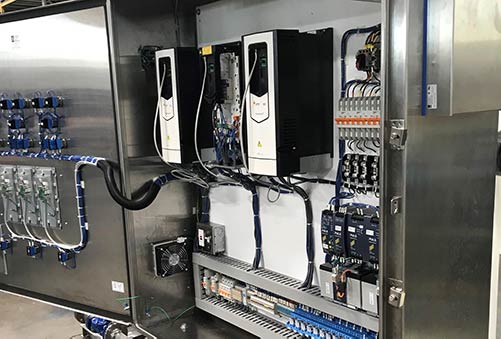Vibration Monitoring with Automated Diagnostics Can Prevent Unplanned Downtime

Condition-based maintenance (CBM) can include several types of monitoring methods including:
- Vibration Monitoring
- Temperature Monitoring
- Pressure Monitoring
- Power Monitoring
- Corrosion monitoring
- Leakage monitoring
- Shaft positioning monitoring
- Lubricant analysis
- Rate-of-Flow monitoring
- Rotational Speed (RPM) monitoring
- Bearing wear monitoring
This article is going to dive into vibration monitoring and how automated vibration and temperature monitoring can economically improve your reliability and predictive maintenance program.
What is vibration monitoring?
Vibration readings are taken to determine the vibration baseline for each piece of rotating machinery. Later readings are compared to the baseline for changes as an indication of potential health or condition deterioration, and converted to vibration spectrums for analysis.
It is important to note that the baseline spectrum is unique for each and every pump. Even two pumps of identical specifications can have baselines which are slightly different. Therefore, it is necessary for every pump to be monitored individually.
What problems can vibration monitoring detect in pumps?
A monitoring device may detect the following problems with your pump:
- Bearing problems
- Rotating element imbalance or misalignment
- Issues with the equipment support system such as soft foot
- Damage to the gear tooth
- Loose connections
- Electrical failures
- Eccentric or broken rotor bars
- Coupling or drive belt problems
- Cavitation or other intermittent process issues

Sr. Applications engineer Rob Greve explains how this 27,000 GPM, critical process pump ran to failure, and how in the future issues could be detected earlier. Vibration spectrums, temperature, and nearly continuous monitoring all lead to levels of predictive maintenance that would have been unobtainable in the past.
What to do after an issue is detected?
While vibration monitoring will alert you to changes in vibration indicative of a potential issue, it may not specifically output the exact cause. After changes are detected, a more thorough analysis of the vibration data must be conducted. This analysis can be conducted in-house by your reliability team or outsourced to a team of skilled repair technicians, or can be performed by an automated system.
Geiger offers control and monitoring solutions designed for pumps, blowers, vacuum pumps, and fans. To learn more about our capabilities and how we can support your system, contact us today.
